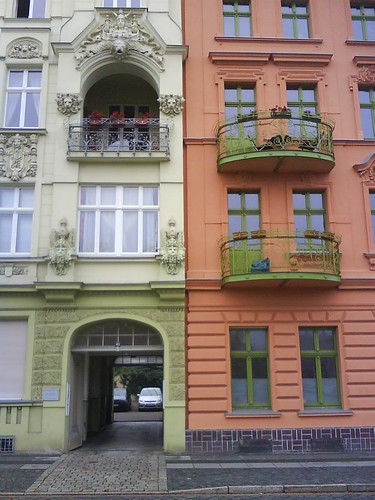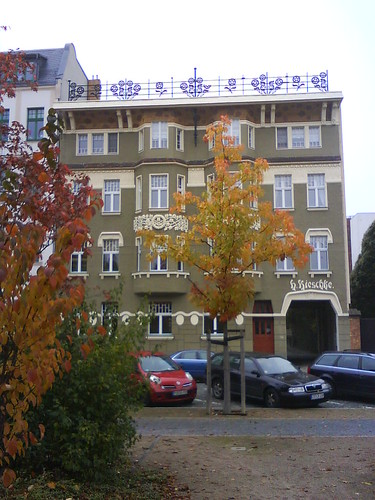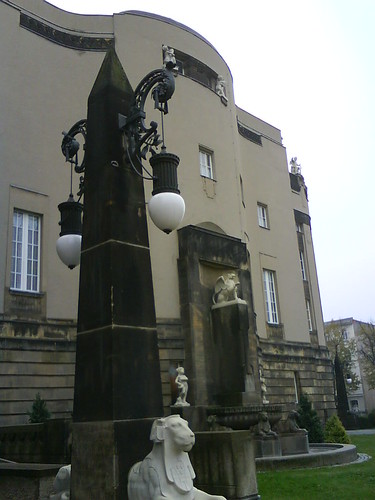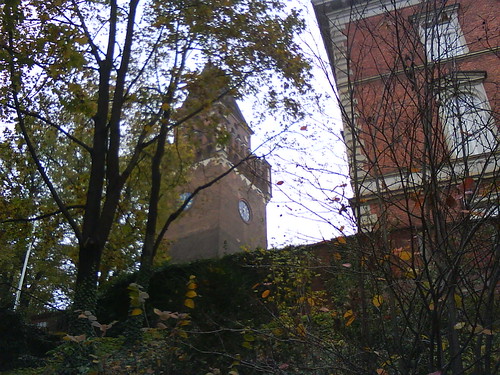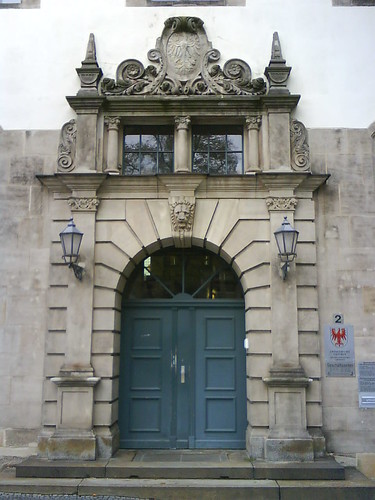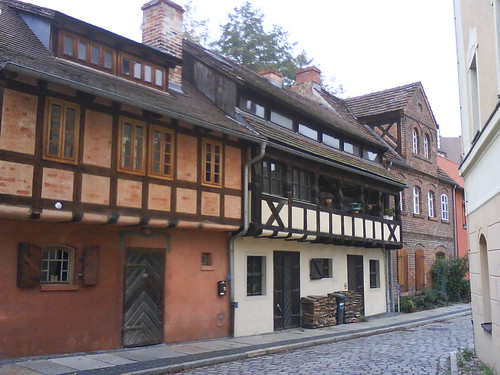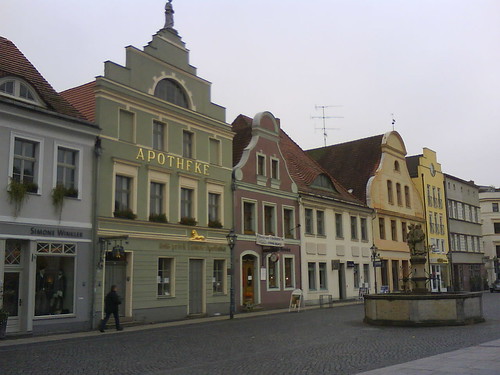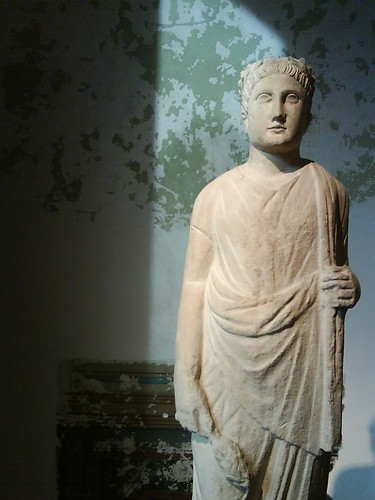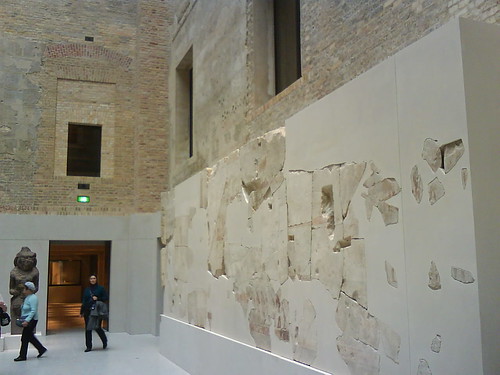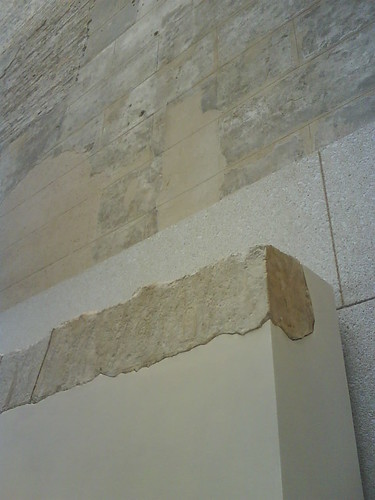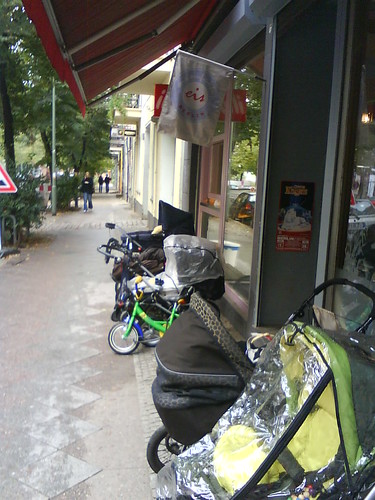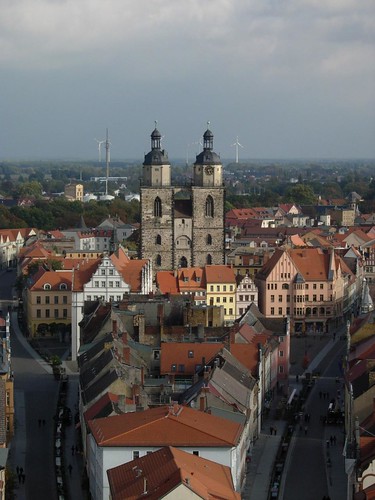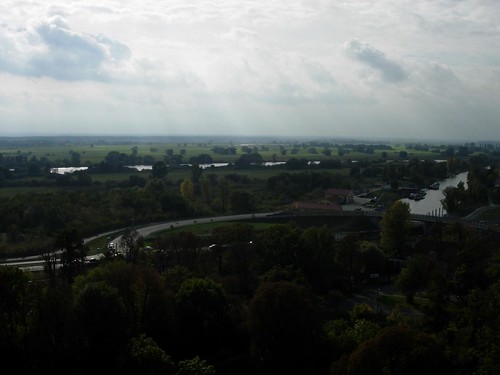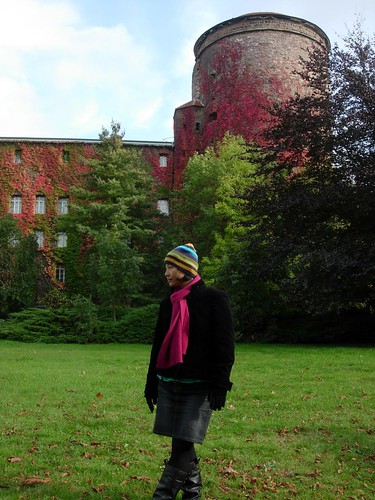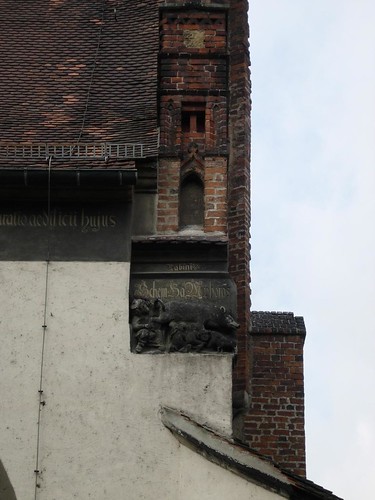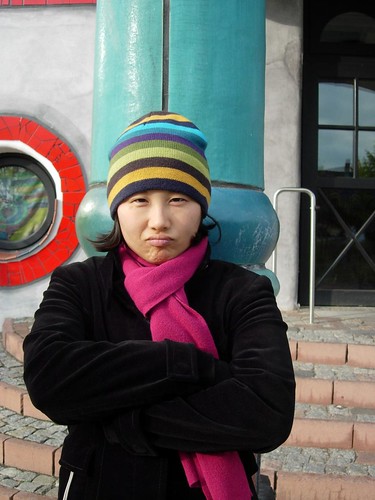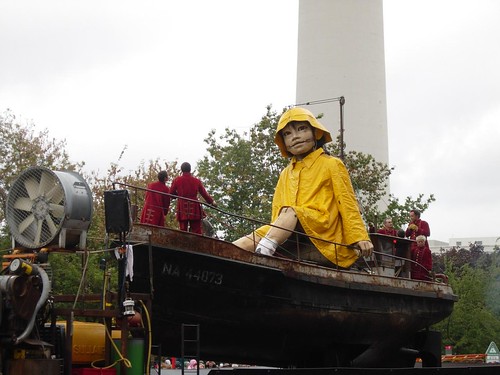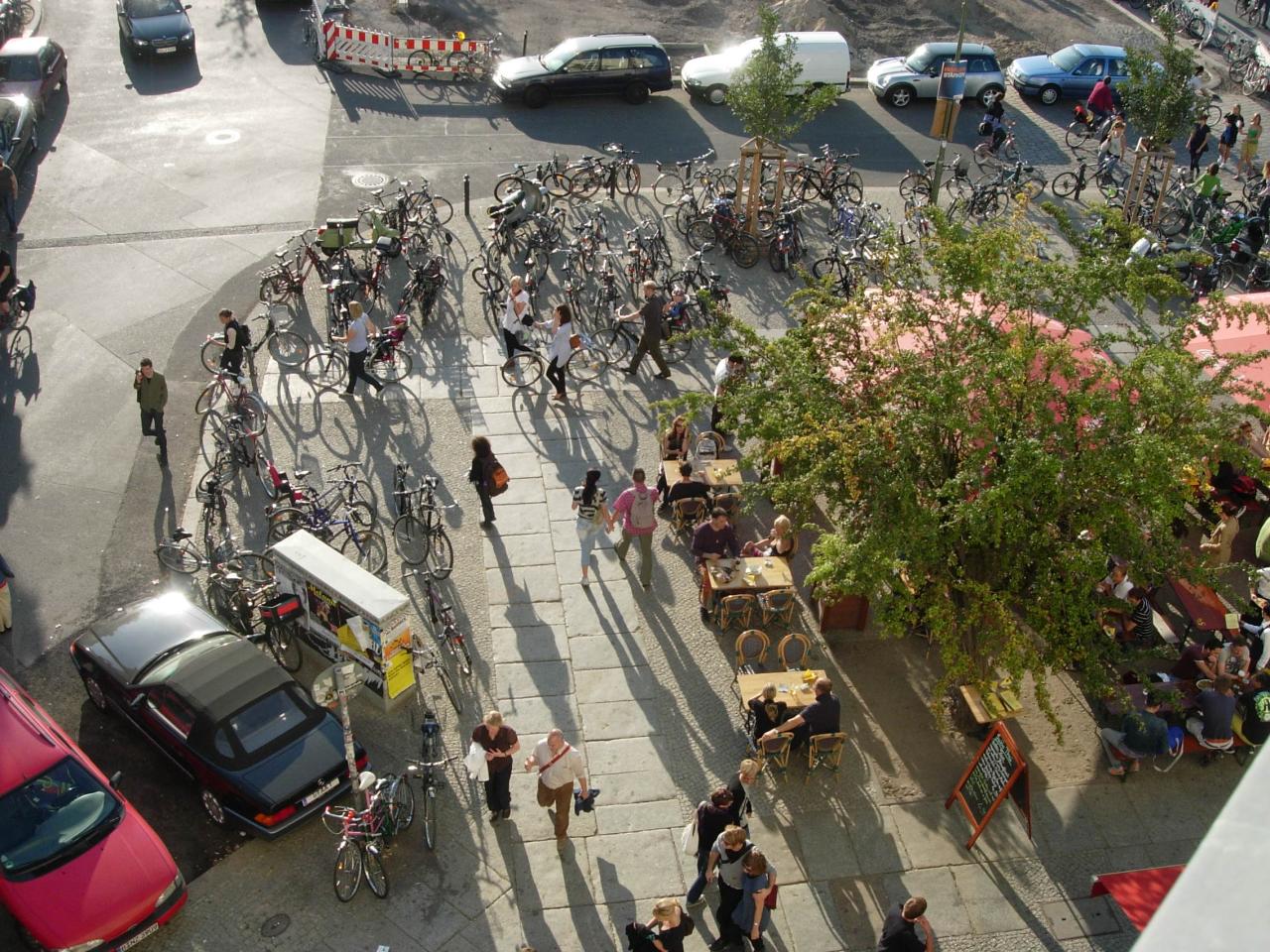Last weekend, as E. attended a conference, I bummed around Cottbus for a day. It's another sleepy eastern German city.
To judge by the architecture, Cottbus must have been affluent and booming around 1900. There are many stately buildings of the era, including examples of Jugendstil (art nouveau).
Whenever I see Jugendstil in Germany I can't get past the thought that it's too heavy to be representative of the genre, though the motifs (vegetative patterns, sphinxes, etc.) are undeniable.
A local architectural highlight is the Jugendstil Staatstheater.
As it happened, shortly after we arrived there was an open rehearsal for an upcoming production of Antigone. I attended, along with about 100 others, which is fairly impressive for a cloudy Saturday morning. The event was billed as an experiment in marketing, and really was just an open rehearsal. The actors and directors worked on two scenes as we looked on, but the actors were barely off book, and the blocking was still taking shape, so it wasn't as if we were seeing anything close to the finished work.
(For theater buffs and dim-witted political scientists, that is an iron curtain, a metal wall that drops in the event of a theater fire to keep it from spreading. I noticed that a fire marshal attended even this rehearsal. German and Austrian fire marshals must be the most cultured people in the world, as one is required at every performance, just in case.)
Cottbus has some cute (though by European standards, ordinary) older architecture.
The highlight of modern architecture is this university campus building (a library, I think).
But if it looks like nothing is going on, it's because nothing is going on.
